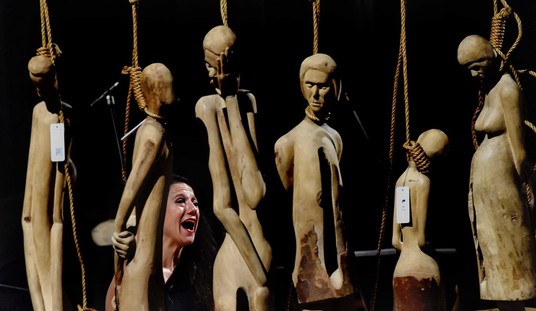Since both Hillary Clinton and Bernie Sander are quite keen to talk about climate change and carbon taxes, let’s take a brief break from the campaign trail and check in on how Mother Gaia is doing these days. We’ve recorded what some climate scientists claim is a string of record warmest months over the past year and if I were judging by the almost snow-free, mild winter we just enjoyed in upstate New York and the rest of the northeast (watch out for the bears) I’d have to agree. So I assume this means we’re all doomed. But oddly enough, though you’d think that hotter temperatures would be turning the planet into a desert, the Earth is responding rather strangely by increasing the amount of vegetation covering the globe as levels of carbon dioxide increase. (Yahoo)
A new climate change study seems to suggest that a rise in carbon dioxide (CO2) emissions has helped plants propagate around the planet. The findings see contrarians (aka climate change skeptics) reasserting their claim that additional CO2 is beneficial for the planet, since foliage harness these emissions for growth. But the researchers behind the study, Greening of the Earth and its Drivers, insist the extra emissions and subsequent “fertilization effect” are more likely signs of a troubled system struggling to adjust.
A tremendous amount of vegetated land has experienced greening, according to satellite data collected and analyzed by 32 authors from 24 institutions in eight countries. The new greenery is equivalent to more than four billion giant sequoias. If all the extra leaves were laid flat, they’d cover the continental United States – twice! Added CO2 accounts for 70 percent of that growth, with climate change, increased nitrogen, and changes in land management accounting for fractions each. Despite global temperatures reaching a record high last year, only four percent of the world’s vegetated land has experienced depletion.
Climate alarmists are quick to poo-poo the results and you get a lot of that in the linked article. It seems that any news can be spun for good or for ill when it comes to this subject, but the one point of general agreement appears to be that nobody saw this coming. I’m not sure why, since plants operate on carbon dioxide and when there’s more of it in the air they probably thrive. (But then, I’m not a biologist and I don’t even play one on TV.) Throughout the history of the planet it’s believed that when there’s more oxygen, the animals do better and grow larger. (Sometimes ridiculously so.) So is it so crazy to think that plants would do better when the reverse is true?
Perhaps more to the point is the question of what all this new greenery is doing to the temperature cycle. I’ve heard a few scientists in nature documentaries speak of the planet’s natural tendency to self-regulate when conditions run toward extremes. Arid regions tend to expand in high temperatures through a process known as desertification, with dead zones growing as the region grows hotter. But green, lush terrain doesn’t soak up and radiate heat as well, so it tends to cool the regions with many plants. If increased carbon dioxide levels lead to this type of massive growth in plant cover, wouldn’t that tend to reduce temperatures over time?
As I said, I’m not a scientist so I’m just tossing out some questions here. We seem to get quite a few things wrong about the planet over the long run and the biosphere continues to surprise us. (When I was in school, Time Magazine was predicting that we’d be entering a new ice age by now.) Perhaps we don’t have everything figured out quite as well as we thought.








Join the conversation as a VIP Member